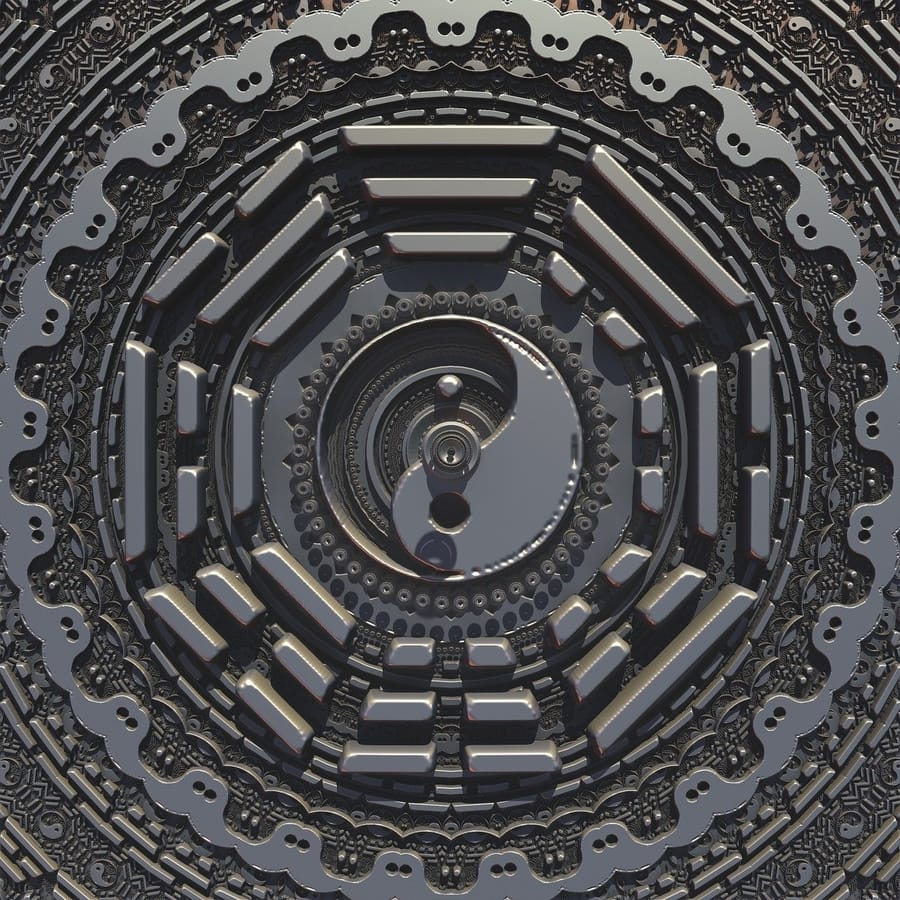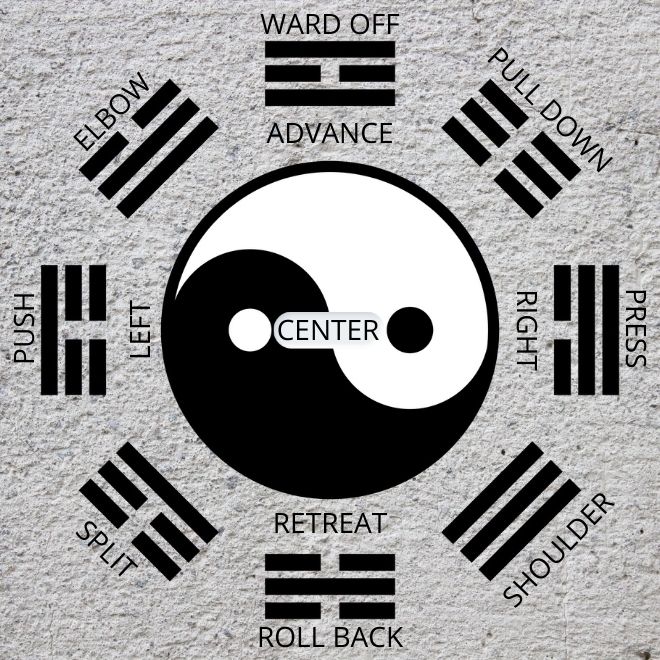Beginners and longtime practitioners of tai chi are continually working to make their form look beautiful and graceful. A form that is practiced correctly also gives us the health benefits from proper breathing concentration and posture. At the same time, correct alignment, balance shifts, and relaxation enables practitioners to correctly perform martial applications. How can all three goals be achieved simultaneously? The Song of Tai Chi 13 Postures gives us the instructions.
The Song of Tai Chi 13 Postures is a series of instructions written in poetic form describing how the eight primary energies are used to move the torso and arms of the body and five movements are used to correctly step and move the lower body.
We are going to dedicate our time here discussing the importance and meaning of the Song of Tai Chi 13 Postures so that you reach your tai chi goals more quickly. Know that the 8 Energies and 5 Step Movements that make up the 13 Postures needed their own essays to give the topics justice. After reading about the Song of 13 Postures, keep reading to get the full picture:
Understanding the Eight Energies of Tai Chi with Video Examples
Roadmap to Perfect Tai Chi Movement – Tai Chi 5 Step Method

What is the Song of Tai Chi 13 Postures?
There is huge historical debate about the meaning and intention of the Song of Tai Chi. We aren’t even talking about what is included in the song! Debates rage on even about what the name or title suggests based on the Chinese characters used to describe it.
It is generally accepted that it is translated as “Song of” because it is described in a poetic fashion to make memorization easier. The character used for “postures” also has been translated as “positions” and “movements.” In addition to Thirteen Postures, the song is referred to as the Thirteen Energies, Thirteen Entrances (eight gates, 5 movements), and the Thirteen Powers. We will stick with “postures” here but know that the song does indeed describe power, movement, opening, and closing.
The ambiguous nature of the title seems to be intentional because the body of knowledge that it is being encapsulated in one written work is quite complex. The best way to think about it is that it is written to describe:
- How to move
- What to concentrate on while you move
- What your intention is for moving
- How your moves put you in a position to correctly or incorrectly influence the following movement
The good news is that there is not an infinite list of ways to move and how to do it. The Song of Tai Chi Postures is broken into two parts. The first eight postures describe the energies that are used to move the torso and arms. They are further divided into the four primary energies (Ward Off, Pull Back, Press and Push) and four secondary (Grasp, Split, Elbow, Shoulder) The last five postures discuss moving in the four cardinal directions and sinking in the center.
Tai Chi Chuan 13 Postures
- Ward Off – 掤 – Peng
- Roll Back – 捋 – Lu
- Press – 擠 – Gi
- Push / Press Down – 按 – An
- Grasp / Pluck – 採 – Tsai
- Split – 裂 – Lie
- Elbow Strike – 肘 – Zhou
- Shoulder Strike – 靠 – Kao
- Advance Forward – 進步 – Jin Bu
- Retreat Backward – 退步 – Tui Bu
- Eyes Focus Right / Right Step – 左顧 – Yo Pan
- Eyes Focus Left / Left Step – 左顧 – Zo Gu
- Central Balance – 中定 – Zong Ding
When we put this all together, we can see that the discussion neatly lays out in the Ba Gua giving us both a way to remember the energies and movements, and a way to focus on each individually to improve on it and then practice it within the tai chi form.
Tai Chi 13 Postures PDF

Take Away: Why is the Song of 13 Tai Chi Postures So Important?
To say that someone has “good tai chi” or that they move well is to say that their entire body is in alignment and that they are moving from the ground and center in every move. It is saying that there is obvious intentional energy displayed in every movement. It is also demonstrating deep thinking and long practice on their part to be able coordinate everything together. Setting the esoteric nature of the song aside, there are some fundamental principles that I witness in students who are transitioning from just connecting a series of movements, to demonstrating tai chi:
Intentionality in Every Movement
By thinking about the purpose of each movement, we put intention into completing each pose before moving on to the next. With new students or when the energy is missing, it looks like a practitioner is just running through a move to get to the next one.
Strong Shapes and Angles
When we think about the energy needed to push or split something it changes the way we hold our body to actually accomplish this movement with real power. When this intention isn’t present, a person just sort of looks like they are waving their hands in the air. As an easy example, stand up and push. Now, stand up and pretend you are pushing a car out of a pothole. Do you see how your whole posture would change?
Healthy Appearance
Tai chi causes the body to act as a huge pump. By constricting and expanding joints and muscles we are massaging tissues, forcing our blood into organs to be cleaned, and exchanging stale air for fresh air. You can imagine that the precise timing of these constrictions allows the entire body to become much more effective. Basically, more like how a snake moves innately.
Connection Between All Movements
Imagine two stories begin told by a child using a book. In one story, the child describes just what he sees on every page. In a second story told by an older child, he uses words like then, after, and at the end to link everything together into a cohesive saga. This is the difference between a new student learning the individual moves of the form and a person who links the moves together to create a form. It is the eight energies of tai chi that create these graceful transitions to link the whole form together.
Storing Energy to Use as Force
Each of the eight energies is actually a storing or a setting up of the following energy. For example, rolling back allows you to store energy to press or push. Stretching out with splitting energy expands the body to compress back in for a strike. This creates a natural flow between movements where each expression of energy is the storing of the next.
The 13 Postures are something that a practitioner returns to time and again throughout their learning. It is a pretty neat concept because you can study it at any point in your training career and see where the next place you need to improve is or what you need to focus on.
Translational Source: Brennan Translation



